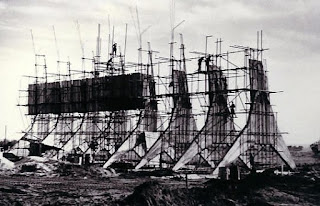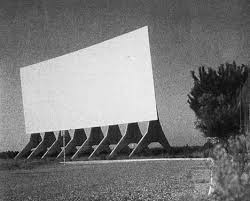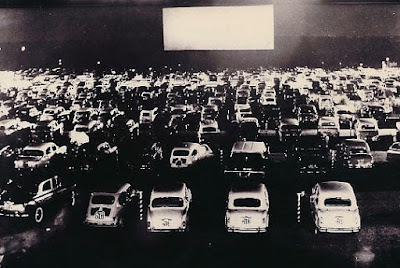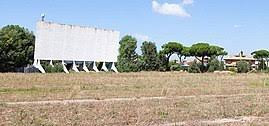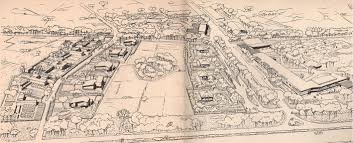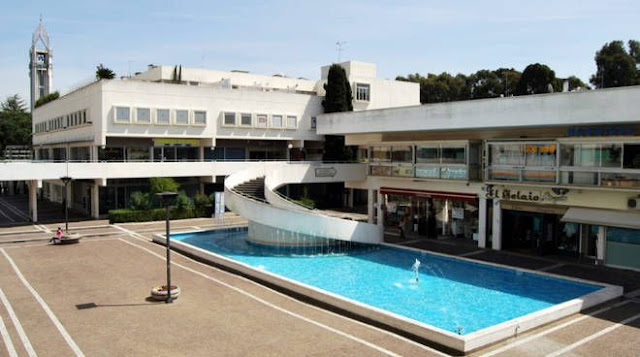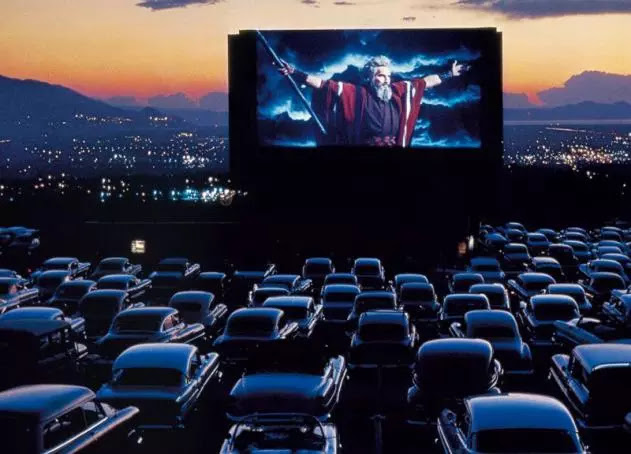Rome's more open today than it was just a few weeks ago, so it may be possible to actually walk the walk that we took about a year ago. If not, maybe in the fall. [This post was first published in April, but we took it down after a few days as events compelled us to write about "Liberation Day" and then the loss of Frederika Randall. We bring it back for the rest of its 10-day or so 'run.']
Rome isn't a mega-city (pop. about 2,800,000), and it sprawls. One result is that there are surprising swaths of countryside remarkably close to the urban core--and even within it. One minute you're on an urban thoroughfare, busy with commerce and residences; turn the corner and you're walking on what feels--and is, in some respects--a country road. Then, further on, more urban Rome, in the shape of a phalanx of modern apartment buildings.
We found an example of "country Rome" on a walk from
Pigneto, a dense, hip, immigrant neighborhood on the northeast of the urban core, to Centocelle, a suburb further to the east. We'll pick up our walk on via Acqua Bullicante, a north/south street packed with shops. Imagine you're walking straight south, about halfway between via Prenestina (to the north) and via Casilina (to the south).
On the left side of the street, facing an Esso gas station, note the mural by
Atoche (above), a prominent area street artist, whose studio is in Pigneto. Then, not far ahead, the Supermercato Il Castoro, with a country remnant--an Olive tree--in the front courtyard.
Immediately beyond the supermarket, turn left on via Forma--our "country road." For the next mile or so, you'll have to be careful as you walk. There's a good deal of traffic, and--typical of the countryside--NO SIDEWALKS.
Right away, some interesting buildings, including one with some neo-medieval touches.
It seems likely that via Forma once traversed small farms and orchards. A few still survive, now joined by small industrial/commercial sites.
After about a half mile on via Forma, turn right at the "T"--onto via Cori. A few hundred yards ahead, in Piazza Sessa Aurunea, note the Carpe Diem Bar (on your right) and a functioning crossroads nasone, if you haven't brought water.
Turn left (east) just before the fountain, onto via Labico. More country road. Again, no sidewalks for about a half mile. Lots of traffic. Note an abandoned sculpture park in the weeds on the right.
On the left, a ways down, an old factory with a rusted green gate.
Bill took one of his
"found art" photos here (which he later printed at 17 X 22 inches--looks great!)
Continue on until the road forks and there's a huge apartment complex ahead.
The "country" part of the walk is over. We like exploring the architecture of such apartment complexes, and we went into this one through a nearby gate, coming out the other side on a road.
Make your way to the NEXT street, to the east, via Francesco Ferraironi, and turn right (south). Follow this street until it curves right onto via Oberdan Petrini. You've got one more block to viale della Primavera. From that street, head straight east, working your way through the 'hood, to the main drag of Centocelle (
which in 2010, Bill called Rome's New Rochelle): via dei Castani (below).
Then just a bit south to the large piazza that houses the church of San Felice da Cantalice.
On that same piazza, across the street from the church, there's a bar/cafe with outdoor space. If you're inclined--and the place is open--have a coffee or a glass of wine and contemplate your journey through the Roman countryside.
Just a couple of blocks to the west and a bit south, you'll find the via Casilina tram. If you don't mind being on public transport, it should be operating, as of this writing, at 50% capacity and you must wear a mask. The tram will take you back to Pigneto.
Bill
